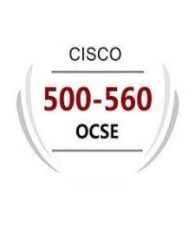The energy sector is facing greater challenges than ever before. Grids must now handle more distributed and variable energy sources from renewables. They must be ready to face dramatic environmental… Read more on Cisco Blogs
The energy sector is facing greater challenges than ever before. Grids must now handle more distributed and variable energy sources from renewables. They must be ready to face dramatic environmental impacts, such as devastating fires and extreme weather conditions like heat waves that can fry a grid causing blackouts for days.
On top of that, energy utilities face demand from a rapidly transforming industry: not only must they ensure constant reliability and availability of power, they must also adhere to stringent security regulations and meet power grid management requirements.
Just a few days ago, Europe’s Energy Commissioner Kadri Simson published an Opinion piece outlining the critical need to update the power grid for Europe to meet its climate goals. As she rightly highlighted, the answer to the grid challenge does not necessarily mean building more physical infrastructure, but rather, how digital technologies can support this transition.
“Europe faces a fundamental challenge in ensuring its energy independence and deliver on its climate goals. It is time to shift our attention from targets and rules to what is needed to make things happen. This means placing the issue of grids at the heart of the debate. Upgrading the power grid will plug Europe into a sustainable future.”
Kadri Simson, European Commissioner for Energy
A European Action Plan to Digitalise the Energy System
In 2022, the European Commission published its Action Plan to Digitalise the Energy System in the European Union (DoEAP). In the Action plan, the Commission notably addresses the need to use technologies to integrate renewables into the grid, improve its efficiency and manage the balance between power supply and demand, thereby saving costs for consumers and companies whilst advancing the clean energy transition.
The Action Plan also calls on EU Member States to enhance the cyber defence of critical entities such as data centres, water utilities and energy infrastructure, all of which have become targets for threat actors.
During her 2023 State of the European Union address, European Commission President Ursula von der Leyen said “modernisation and decarbonisation can go hand in hand”, referring to the next phase of the European Green Deal. At Cisco, we have developed solutions in many of the priority areas highlighted by the European Green Deal and DoEAP.
Energy grids under deep digital transformation
To thrive in this new era, utilities are investing in more efficient, automated, and resilient energy grids that require advanced telecommunications systems. By connecting the energy ecosystems, technology helps optimise production and demand. The backbone of these new systems consists of IP-based, packet-switched networks, providing system interoperability and enabling a spectrum of new applications that improve grid security, control, and much-needed flexibility.
Smart grids connect the entire supply, grid, and demand elements via an intelligent communication system. This allows for better oversight of supply and demand with advanced analytics that help optimise energy usage, and ultimately reduce costs. Our White Paper on the Digitalisation of the Energy System gathers details on the technologies that enable this transformation.
Increased energy needs for data centers
With the exponential amount of data combined with the impact of the climate crisis, 75% of organisations are predicted to have a data center sustainability program in place by 2027, according to a recent Gartner research.
This is an approach we also observe at Cisco as every year more and more of our customers decide to put sustainability at the center of their purchasing and deployment decisions. We need to enable them to better balance the performance needed to tackle compute-intensive workload like Artificial Intelligence / Machine Learning with their growing focus on sustainability.
We are proud that last June, Cisco’s servers, networking, and storage unified system, UCS X-Series, has earned the 2023 SEAL[1] Sustainable Product Award, which honors products that are “purpose-built” for a sustainable future. The latest-generation of the UCS X-Series is 54% more energy efficient at the processing level than previous generations. It is managed by Cisco Intersight, enabling constant monitoring of energy usage with visibility of compute power across data centers, sites, and locations in one tool, enabling customers to dynamically adjust power usage for optimal efficiency.
In addition, we have been taking several steps to make our own data centers more sustainable, from energy management and streamline hardware, to reducing data center energy consumption, optimisation of heating, ventilation, air and much more.
Today, Cisco’s data centers are powered by 72% renewable energy. These actions have allowed us to reduce Cisco data centers’ power needs by 40% (compared to 2016), redeploy 58% of server cabinets removed from service, and reuse 43 tons of cabling equipment saved from e-waste.
Investing in the energy system and collaborating for greater results
As leaders meet in New York for the 2023 UN Sustainable Development Goals (SDG) Summit and Climate Week, Cisco looks forward to working with policymakers, public officials, utilities and the private sector to ensure that Europe’s energy system continues to evolve and transforms itself for the next phase of the EU Green Deal. It has the potential to deliver on many of the SDGs goals such as affordable and clean energy (SDG7), resilient industry, innovation and infrastructure (SDG9), sustainable cities and communities (SDG11) and climate action (SDG13).
Digitalising the energy system is a crucial step in the climate transition, not only in ensuring that the energy sector works better for consumers, but more importantly that it works better for the planet and its resources. By investing in cutting-edge technologies and integrating them into the energy infrastructure, we can deliver more efficient and automated operations.
From transmission and distribution system operators (TSOs and DSOs) creating a digital twin of Europe’s energy system, to national regulatory authorities working on common principles, and universal guidelines on data center sustainability, Cisco will continue to collaborate with organisations – public and private – on energy digitalisation, particularly in the context of the EU Action Plan on Digitalising the Energy System.
For more information, see our White Paper on the digitisation of the energy system
[1] SEAL is an organisation that drives accountability for environmental progress.
Utilities are investing to connect the energy grid and make it more efficient, automated, and resilient. This blog looks at how the European Action Plan to Digitalise the Energy System addresses the need to use technologies to reach climate objectives. Read More Cisco Blogs










